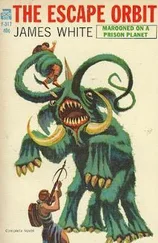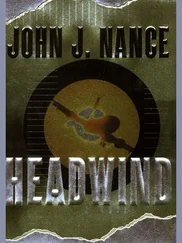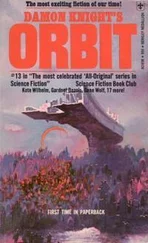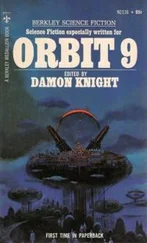It was amazing how efficient the ASA ground school had been in prepping people like Kip. Within an hour of reporting for class, he’d had his new name tag clipped to his shirt and been greeted, briefed, equipped, supplied, introduced, and seated in ASA’s version of Astronaut 101, taught by the various astronauts themselves. American Space Adventures had accomplished the impossible in less than five years, they were told, and they had no intention of being shy about telling their story.
The company’s chief astronaut, George Andrews, opened the first day. A former NASA astronaut with one shuttle mission, he moved around the classroom with the ease of an experienced professor, inspiring confidence by his just standing there, his youthful appearance the result of keeping a fifty-year-old body in top condition, though his hair was clearly graying.
America’s Space Prize, Andrews explained, was created after the first private suborbital flight won the Ansari X prize in 2004. Burt Rutan’s Scaled Composites had teamed with Microsoft billionaire Paul Allen to pull it off, using a Rutan-built air-launched craft called SpaceShipOne carried aloft by a mothership from the same Mojave airport. Once the realization had sunk in that private spaceflight was a new, fledgling reality, another prize, ten times larger, was announced. The Bigelow Aerospace Corporation—a start-up organization with big dreams to orbit and operate space hotels—would need a way to get customers to and from their inflatable space stations. The fifty-million-dollar prize they posted came with a stringent list of rules. To win, a privately funded company had no more than five and a half years to figure out how to build, with no government money, a private spacecraft that could fly at least five people into a two-hundred-fifty-mile-high altitude for a minimum of two orbits, and do it a second time within thirty days.
ASA had tackled the challenge like NASA had tackled the moon in the sixties. They won the prize handily nearly a year ahead of schedule with a winged, double-tailed craft that looked like an overfed version of SpaceShipOne, and within six months were in full commercial operation.
“Our machine is a bit of a miracle,” Andrews told them. “We couldn’t just fire it up to sixty-five miles and let it glide back to Earth like Burt Rutan did with SpaceShipOne . We had to figure out a way to carry enough fuel to get it to at least two hundred and fifty miles up, then accelerate it to seventeen thousand miles per hour orbital velocity, then find a way to lose all that monstrous buildup of energy without constructing a battleship of heat tiles like NASA’s shuttle or running the risk of incinerating ourselves like Columbia if something went wrong. And we had to build in enough life support and backup systems for staying in space long enough to dock with one of Bigelow’s future orbiting hotels.”
The key, they discovered, was to air-drop the ship from a Lockheed 1011 jumbo jet, then use a very large load of rocket propellant to blast up to speed and altitude, and the same propellant to blast back to zero velocity before descending.
“That meant we needed a far more efficient fuel system and a lot of fuel, and thanks to thinking way, way out of any known box, we did it.”
“How about the dangers of all that fuel?” one of the class had asked.
Andrews had laughed. “Nowhere near as scary as sitting on top of a virtual bomb, which is what the space shuttle does on every launch. I mean, is it risky? Of course. This isn’t an airline flight. That’s why we’ve got a half day of release forms and informed consent instruments our lawyers require you to sign. But don’t forget, I… or one of our other astronauts… will be up there, too, and just like you, we all have families to come back to.”
Some of us do, Kip remembers thinking sadly.
“Okay, Kip. We’re starting the checklists now,” Bill Campbell says, pulling Kip back to the present.
There is a point, Bill has already explained to him, when a professional pilot submerges a large part of his conscious will into his procedures and checklists, and Kip watches that moment arrive. Campbell now becomes the smooth professional running through the complicated predeparture checks without a flicker of emotion.
Kip, however, is the wide-eyed amateur, and for him, no amount of ground school or simulation can make what’s about to happen feel routine. In fact, every motion, every noise, every radioed response between Mission Control and Campbell is just below the threshold of startling.
One of the pilots in the mothership has triggered his radio. “ Intrepid, Deliverance. Comm check all channels and lock.”
Deliverance is the name of the highly modified Lockheed 1011 that engulfs them, the carrier aircraft from which they will hang as an appendage until the four mechanical releases are triggered open at sixty thousand feet.
“Roger, Deliverance, checks in progress, showing nominal and green all channels. Telemetry initiation confirmed… and all checks cycled and complete with green.”
“Roger.”
Kip has his own headset, and his microphone is set up in such a way that when he speaks, Bill can automatically hear him—as can the support technicians on the ground. But remaining quiet is something he dearly wants to do, not wishing to interfere in any way with Bill’s sequence for doing things or run any risks of helping something go wrong.
The checks are suddenly over, the radio channel quiet, and he hears in place of the chatter the sound of Deliverance ’s huge high bypass jet engines starting up, the entire exercise sounding no different than any routine airline departure.
Which is, Kip thinks, rather like what this is. What’s amazing is how fast this kind of private spaceflight has become so reliable and so routine. Crank the engines, fly to altitude, drop Intrepid, which does its thing at three hundred ten nautical miles above the Earth, then comes home after making two million dollars. Clockwork.
He feels the 1011 start taxiing rather than sees it. Intrepid is suddenly bobbling back and forth on its four attach points, like they’ve scrimped on the attachment hardware and tied Intrepid to Deliverance with baling wire.
Kip looks out the side window and back behind them, seeing enormous tires rolling slowly. Craning his neck to see through Bill’s bubble canopy nets little more. Basically he has a great view of the 1011’s belly.
Bill flicks a switch toward the end of the runway porting the regular air traffic controller-to-pilot channels into Kip’s headset.
“ Deliverance, Mojave Tower, you are cleared for takeoff Runway Three-Zero, fifteen thousand nine hundred feet available. Winds are two nine zero at six, gusting twelve.”
So now it really begins! Kip thinks, still not believing where he is.
“Roger. Deliverance is cleared for takeoff, and we’re rolling.”
Physical noises and motions like he’s never experienced course through his body and head, shaking and galvanizing him as the oversized engines wind up to their seventy-thousand-pound thrust level. Slowly at first, or so it seems, the aircraft-spacecraft combination rolls down the runway as if it were reluctant to go, gaining speed slowly, every bump and uneven section of the concrete surface magnified by the time it’s transmitted through the attach points to Intrepid. Kip feels his eyeballs wobbling with each jolt, the startling vertical accelerations feeding the feeling that they’re also fishtailing down the runway.
The frequency of the gyrations and bumps increases as they pass a hundred knots, steadily working their way up to the one-hundred-sixty-knot speed, which is the point at which Deliverance ’s captain eases back on the yoke and causes the huge Lockheed wings to cant up into the wind, producing, at last, more lift than there is weight to be lifted.
Читать дальше











